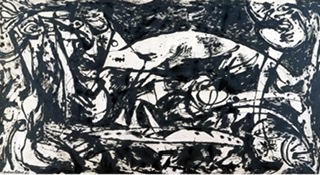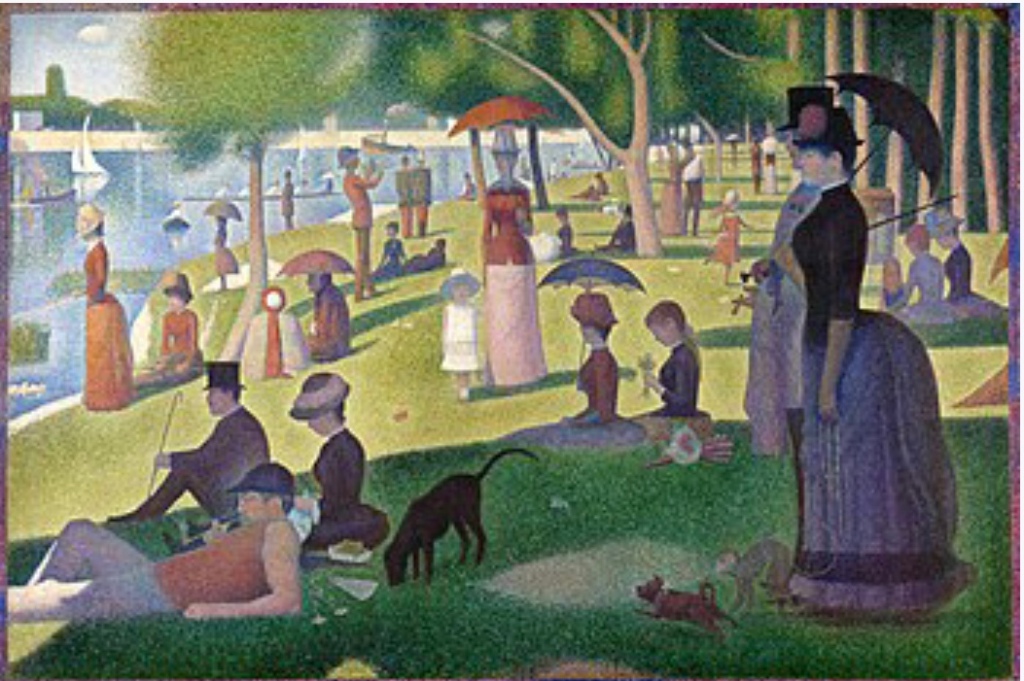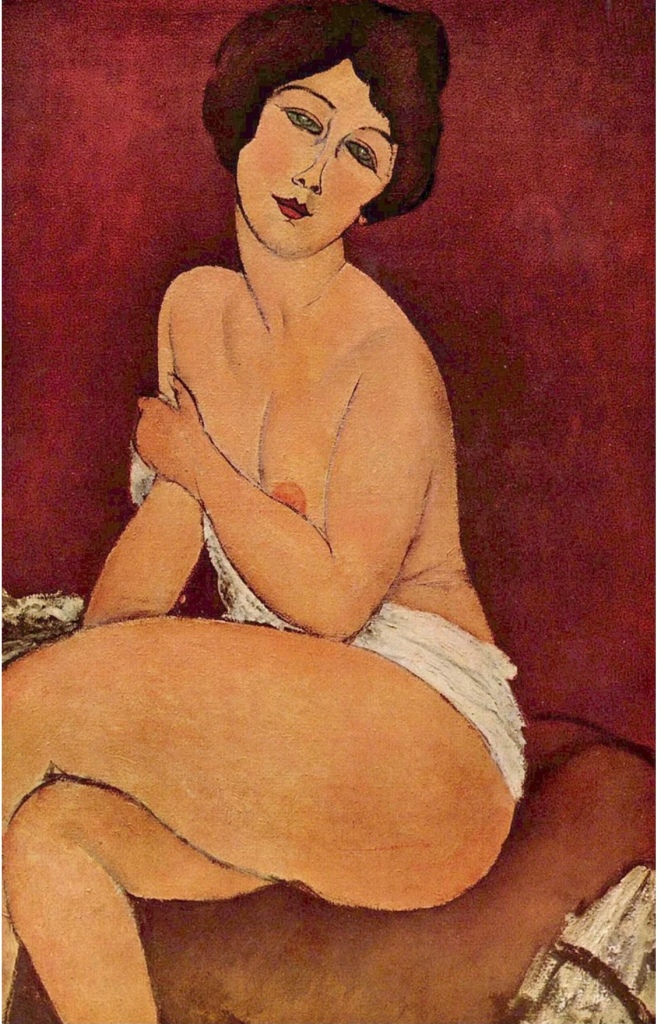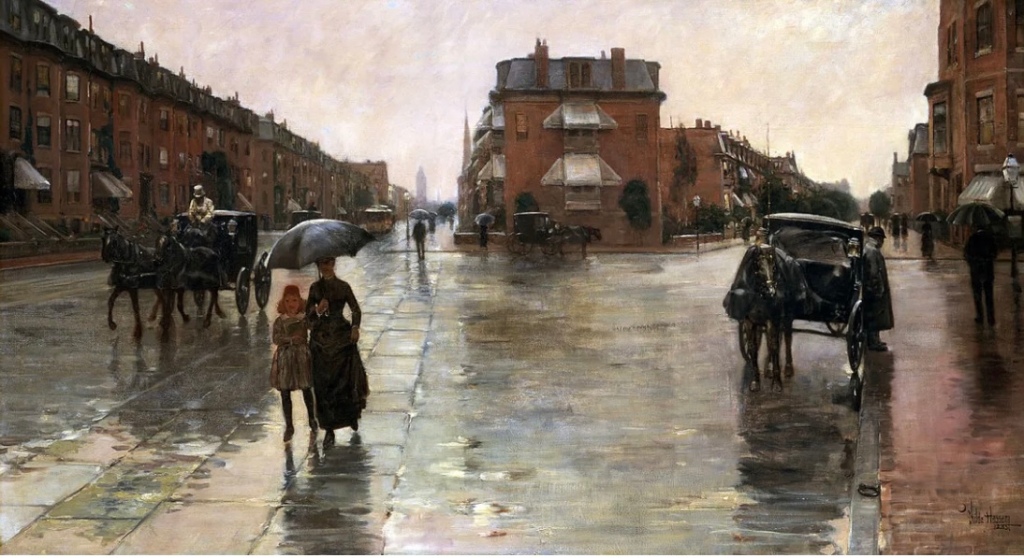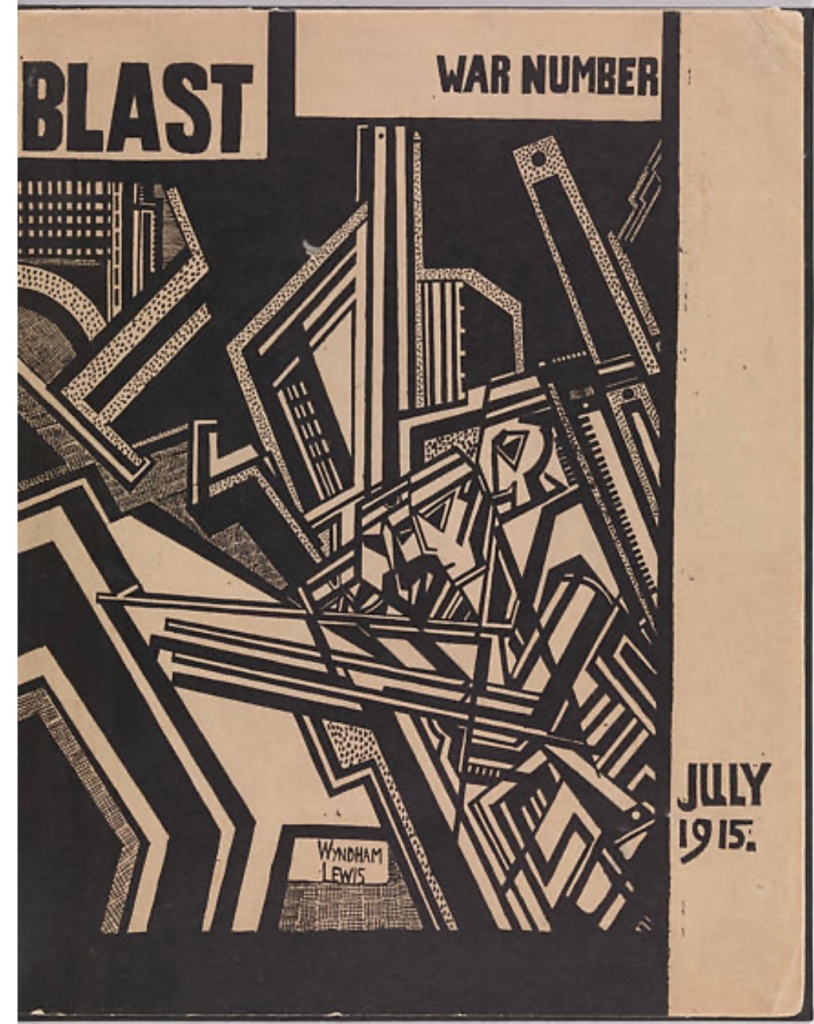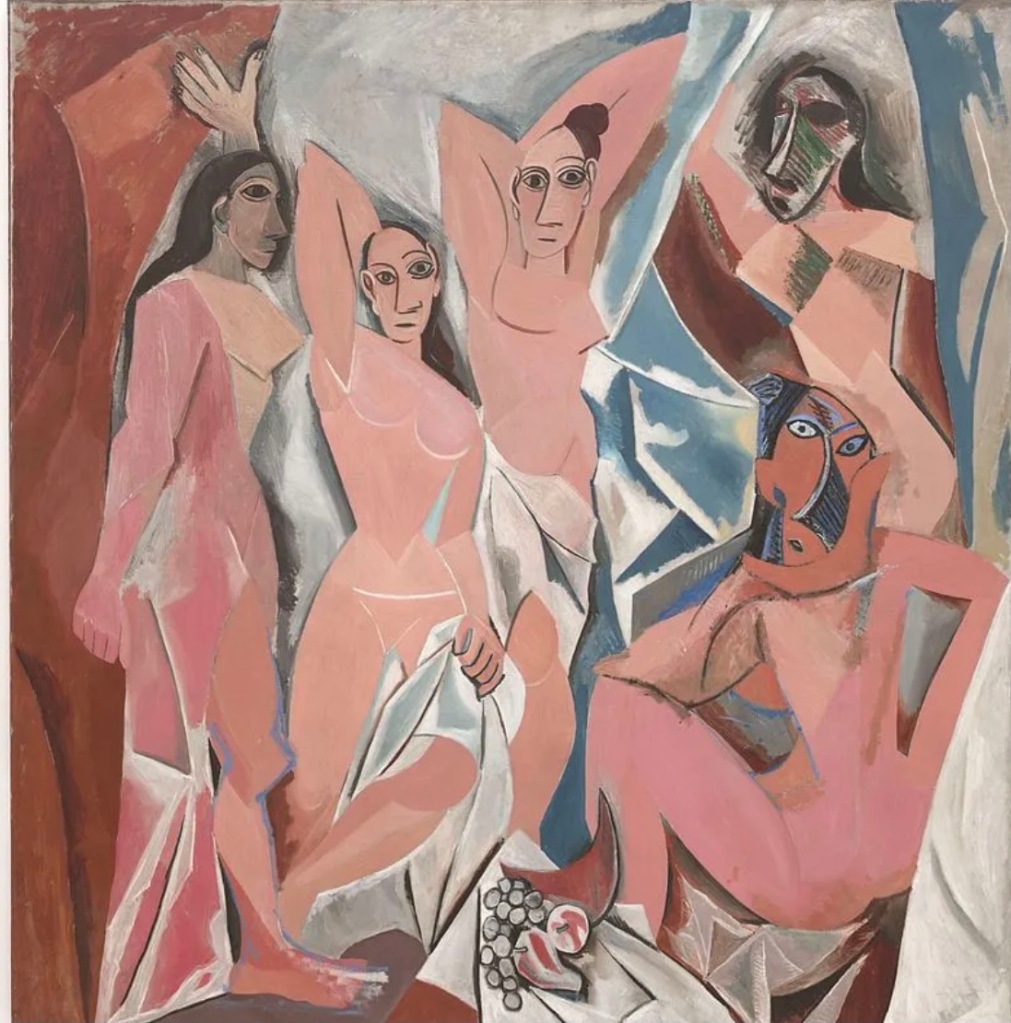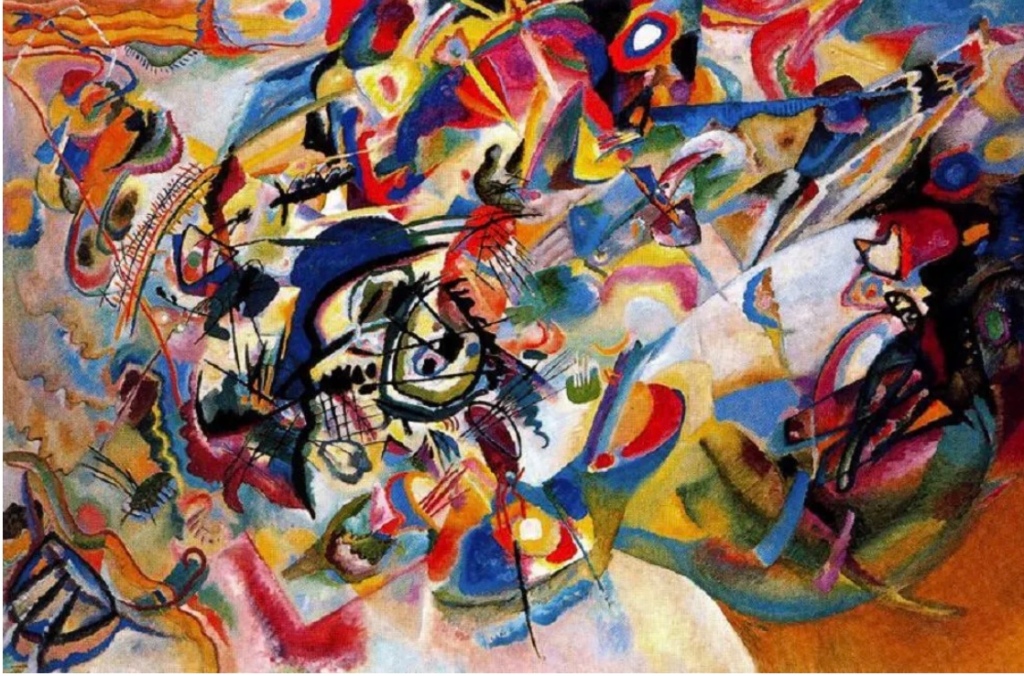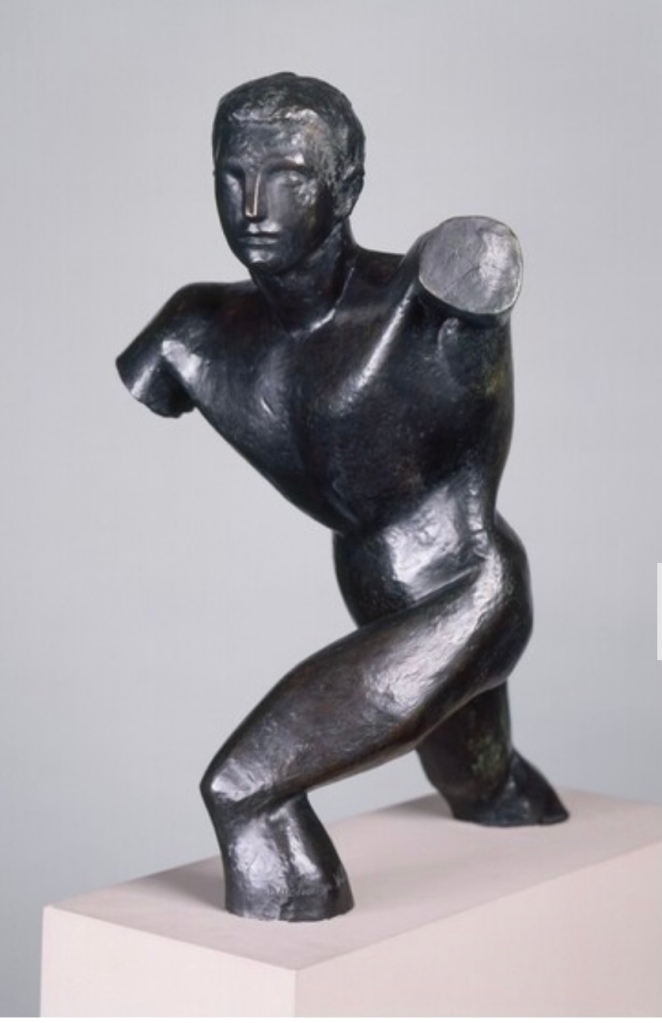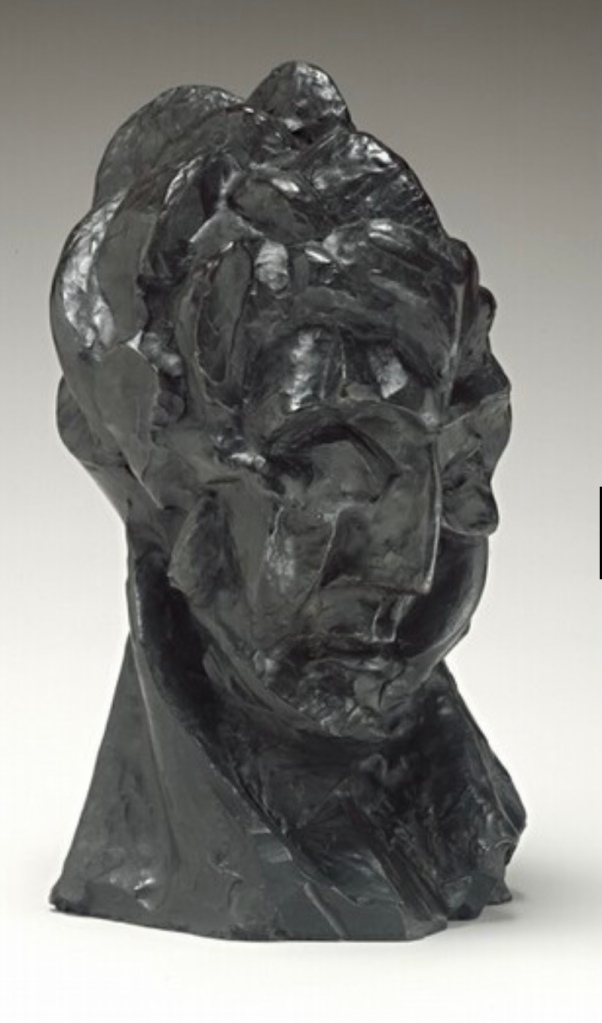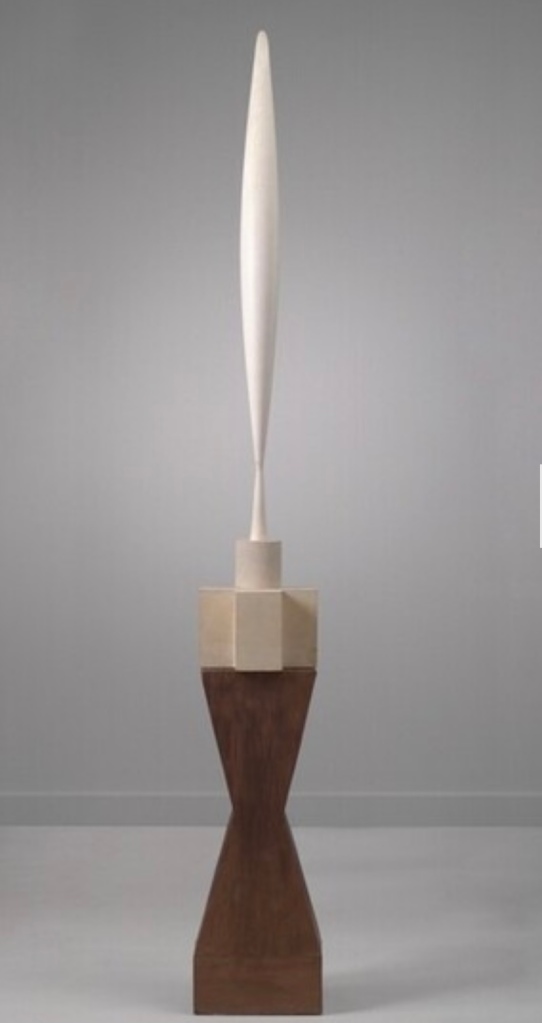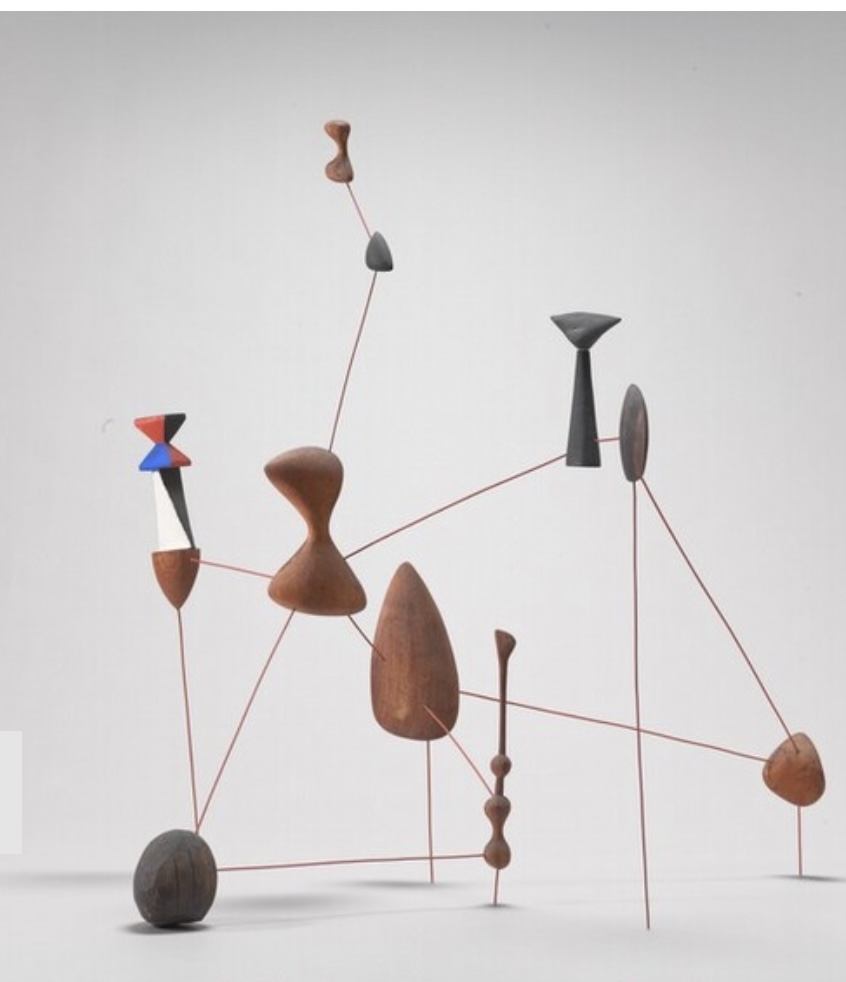Below are my notes about Modernism from the readings I did.
Kathleen Kuipier ( ‘Modernism. Art. Britannica, 2014) explains: ‘Modernism in the fine arts is a break with the past and the concurrent search for new forms of expression.’ At the same time, Creenberg Clement states (Modernist painting, Forum Lectures,1960) that ‘ Modernism has never meant and does not mean a break with the past. It may mean a devolution, un unravelling, of tradition, but it also means its further evolution.” Greenberg brings to our attention a term of ‘Modernism’ s self-criticism’, which, as I understood, he suggested as a more appropriate way to identify the process that originated in philosophy and eventually spread onto arts. He outlines that modernist self-criticism was ‘pure practical, empirical, not theoretical.’
It is recognised that ‘Modern Art’ and ‘Modernism’ mean artworks created during the approximate period 1870-1970 and then followed by “Contemporary Art’/ ‘Post Modern Art’ – 1970 onwards. It has to be mentioned that some art institutions, such as the Tate Modern in London, Musee National d’Arte Moderne at the Pompidou Centre in Paris, Museum of Modern Art in New York, prefer to take 1900 as a starting point of Modernism and make no distinction between ‘modernist’ and ‘post modernist’ works, and see both as different planes of ‘Modern Art’.
Modernism in fine arts evolved as a result of the Industrial Revolution (1760-1860) and a subsequent emergence of a modern industrial life, which made humanity face a new reality and created the necessity to reflect on it. More and more people started to travel and engage in distant trips throughout Europe and America and migrated from rural areas to cities and towns, embracing urban life, which began to flourish. Thus a whole new, quite dramatic shift happened in the human’s existential paradigm in the industrial era what eventually had been reflected in arts: visual arts, literature, architecture and fashion. Artists began to explore new unconventional, not traditional techniques and artistic approaches to find new and better ways of expression. They began to experiment, using bright and vibrant colours or following monochromatic representation, bold brushstrokes or tiny dots, departing from a traditional single-point perspective, introducing “multiple various conflicting vantage points” (Anderson Mic). Another important event that dramatically influenced visual arts and critically affected painting and drawing was the invention of photography. Before the painting and drawing used to carry a very utilitarian function – to represent the object. Thus photography as a means to represent the object made painting and drawing to ask existential questions to themselves as to disciples – what are they for? Photography ‘which seemed to make painting obsolete’ (Kelley Marks, ’65 Great paintings of Modern Art’, 2020), no painter could compete with a photographer in terms of detailed realistic representation of the object. Thus artists had to look for new ways of painting and expression.
Some examples of modernist paintings (from left to tight in each row):
A Sunday on La Grand Jatte – 1884, oil on canvas by George Seurat, 1884-06; in the Art Institute of Chicago. Image: Helen Birch Bartlett Memorial Collection, 1926.224/Photography @Art Institute of Chicago, image via http://www.tate.org.uk [accessed 03.02.2021];
Nude Sitting on the Divan (1917) by Amedeo Modigliani, image via http://www.owlcation.com;[accessed on 05.03.2021];
Rainy Day, Boston, (1885) by Childe Hassam, image via http://www.owlcation.com; [accessed on 05.03.2021];
The Second Edition of Blast (1915), published by Wyndham Lewis, image via http://www.metmuseum.org; [accessed 03.02.3021];
Les Demoiselles d’Avignon (1907) by Pablo Picasso, image via http://www.owlcation.com; [accessed on 05.03.2021];
Composition VII (1913) by Wassily Kandinsky, image via http://www.owlcation.com; [accessed on 05.03.2021];
According to Greenberg (‘ Modernist Painting’, 1960), while Old Masters used the medium- the flat surface of the canvas, the pigment and its properties, where only a ‘negative’, as I understand ‘supportive’, factors in the art work, which aimed to represent the reality realistically. Modern painters took the medium as the main factor in their artwork, ”forgetting’ about underpainting and glazing, taking the viewer’s attention to colours itself coming from ‘tubes and pots’. Greenberg (‘Modernist Painting”, 1960) says that ‘ realistic, naturalistic art had dissembled the medium, using art to conceal art; Modernism used art to call attention to art’. I understand it as old masters aimed for realism in their artworks, and realistic representation was the main goal, but Modernism stepped away from this goal and introduced the concept of art for the art sake. Thus the representation problem in the art further evolved into the direction. What we see on the surface of the canvas is a separate reality, and any artwork is a self-sufficient object by itself. Greenberg (‘Modernist Painting’, 1960) further continues: ‘ Whereas one tends to see what is in an Old Master before one sees the picture itself, one sees a Modernist picture as a picture first. It doesn’t mean that Modernists stopped painting recognisable objects in their paintings. Still, Modernists certainly took a first and a great step forward in creating associations of recognisable objects. Modernism was quite radical in demanding to reconsider the essential norms of paintings, refusing to comply with formal social requirements for an image to be a painting. In this sense, Greenberg mentions Mondrian’s paintings as evidence of ‘ …these limits pushed back indefinitely.
Edouard Manet (1832-1883) is considered a founder of Modernism who broke away from traditional notions of perspective and subject matter. Although his painting ‘ Le Dejeuner sur l’herbe’ exhibited in the Salon des Refuses was found untraditional and shocking, most art critics consider this was a starting point of Modernism.
Even though modern paintings dramatically vary in terms of technique and style, there are certain features that can be noted:
- Modern artists brought New Types of Art. Modern artists invented, and they were the first who developed such forms of art as collage, assemblage, animation, kinetic art, land art, performance art;
- They used new materials;
- They heavily relied on the expressive power of colour. Movements like Expressionism, Colour Field painting, Fauvism used colour in major ways;
- They developed new techniques such as Chromolithography, automatic drawing, Action painting, Frottage, Decalcomania;
The avant-garde movements that followed Modernism are Impressionism, Post-Impressionism, Cubism, Futurism, Vorticism, Expressionism, Fauvism, Constructivism, Suprematism, De Stijl, Dada, Surrealism, Abstract Expressionism.
Bibliography: 1) Anderson Mic, 10 Modernist Art Movements [online], http://www.britannica.com; [accessed on March 2, 2021); 2) Greenberg C., Modernist Painting, 1960, [online], http://www.yourku.ca; [accessed on March 2, 2021];
3) Kathleen Kupier, ‘Modernism‘ [online], http://www.britannica.com; [accessed March 2, 2021];
4) Kelley Marks, (May 17, 2020) 45 Greatest Paintings of Modern Art, online, http://www.owlcation.com; [accessed on March 5th, 2021];
5) Pissarro J. Greenberg, Kant and Modernism?, Notes in History of Art, 2009, online, http://www.joachimpissarro.com; [accessed on 07.08.2021];
6) Tate, Modernism, [online] available from http://www.tate.org.uk;[accessed March 2, 2021];
7) Modern Art, Editors of Encyclopaedia of Art (eds), online on http://www.visual-arts-cork.com [accessed on 12th of March 2021]
Exercise 2.0: Find two paintings and one sculpture, each of which appears concerned with modernity, modernism and modernisation. Indicate the relevant features on annotated reproductions. The following questions should help: a) does the subject seem to be of its time? b) does the work or its subject matter appear mechanical? c) does the master exploit the look of the medium?
Below is a sculpture ‘Rabochii & Kolhoznitsa”, which can be translated as a ‘Worker and a Collective Framer’. The statue was created by Soviet artist Vera Mukhina in collaboration with Boris Iofan, soviet architecture. The artwork was created in 1937. Its creation was mainly dedicated to the industrial expo in Paris to represent the USSR pavilion. The sculpture is a sample of ‘Soviet Realism’ and can be considered a modernist artwork because it was created as a symbol of a new era, a new time and a new young country in its everyday life’s glory. Mukhina and Iofan used a newly developed particular type of light stainless steel with anti-corrosion properties, a new and modern material. The sculpture is 24.5 meters in height made its creation and assembly a very technological process, including the development of new tools such as a new type of welding machine. The new type of steel was very appropriate for authors’ art purposes: the sculpture’s surface was very reflective, so it looked unusual and futuristic. It took the main prize in Paris International Expo, 1937.
Rabochii I Kolhoznitsa, 1937, V. Mukhina, stainless steel, image from http://www.msk-guide.ru;
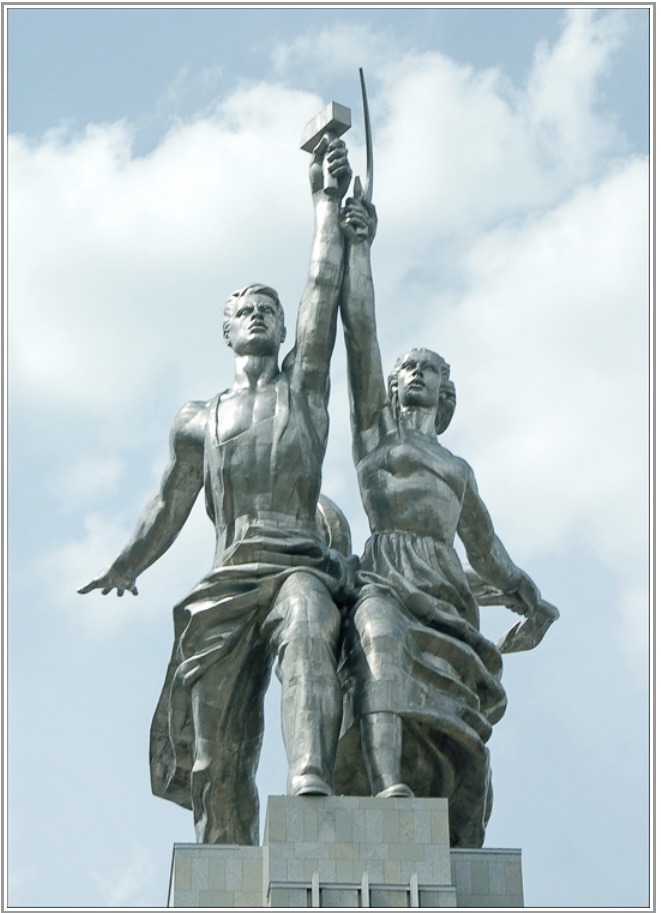
Broadway Boogie Woogie, 1942-43, Piet Mondrian, oil on canvas, image online via http://www.moma.org;
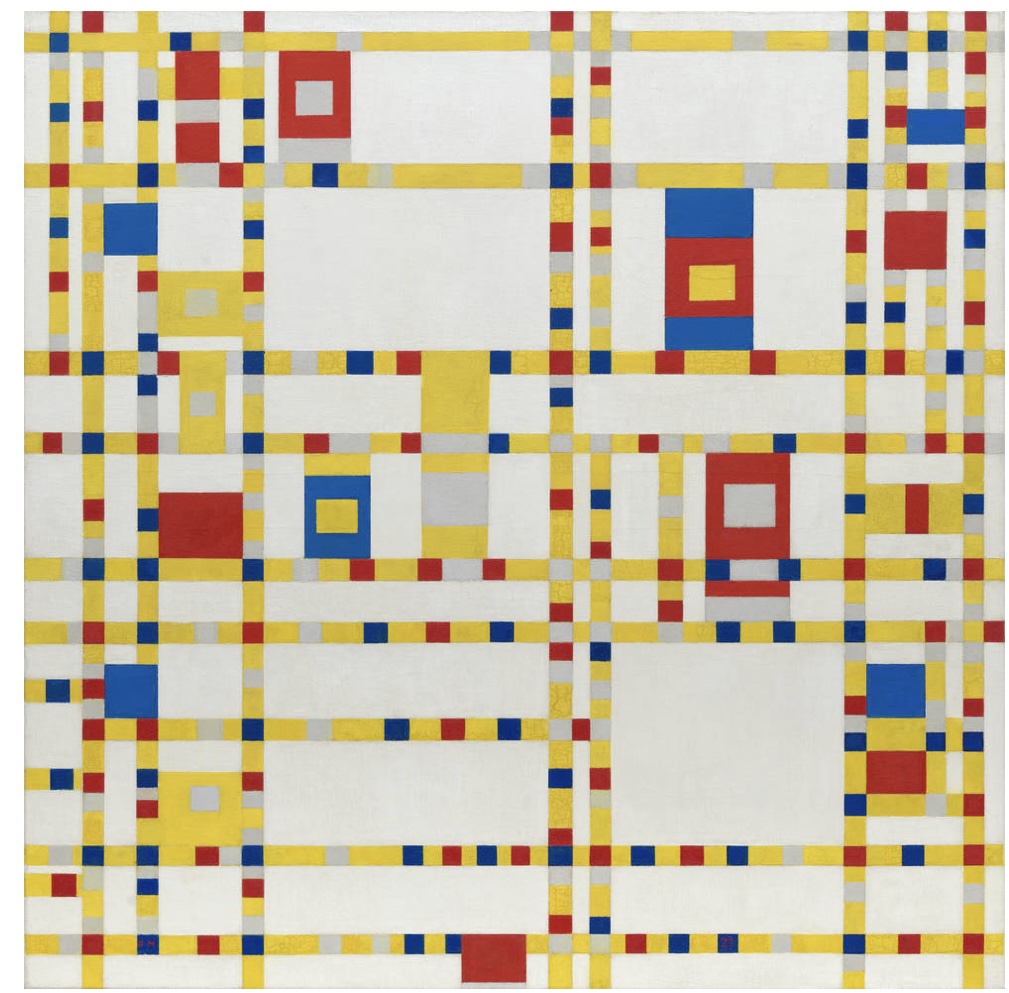
This painting by Piet Mondrian was created as he moved to NYC in 1940. He adored the city and fell in love with it. This painting was a first representation of his emotions at new place which was New York – a symbol of vibrant and colourful modern city life. This is an abstract painting. Art critics agree that the painting is associated with city’s road grid, the yellow cubes represent NYC iconic taxis.
Another artwork which I picked up for this exercise is a painting Turksib by Kazakh painter Abilkhan Kasteev (1904-1973). This painting represents the new time when the Soviet Union realised the grandiose railway project all over the country. On the painting we can see people viewing for the first time on their lives and greeting the railway train which finally came to their place. The train symbolises the new, upcoming modern life.
Turksib, by Abilkhan Kasteev, 1969, oil on canvas, image online via http://www.adebiportal.kz;
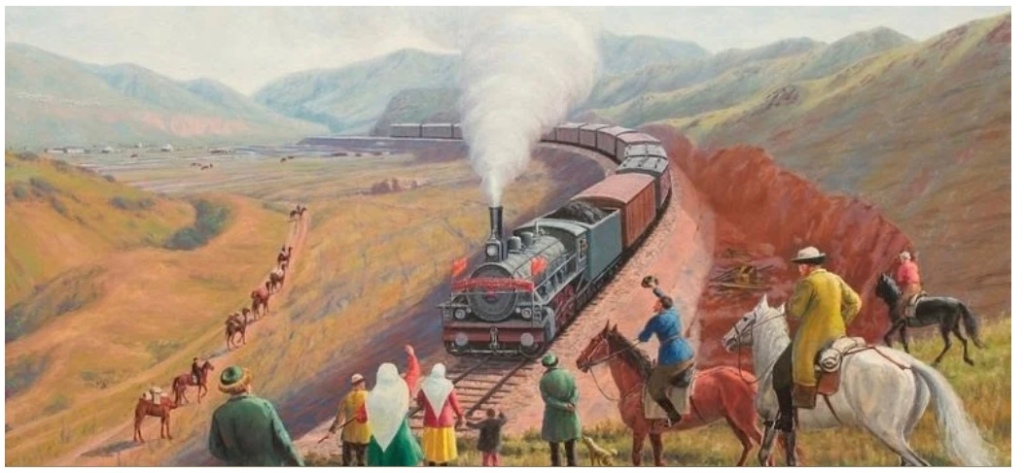
Self Reflection after receiving my Tutor’s feedback. The text below was added after receiving my Tutor’s report.
Below is a quote from her report.
‘Exercise 2.0: Here you were asked to annotate reproductions of your chosen works. The Mukhina sculpture: certainly the materials were modern at the time. But think about the form of the sculpture – it is figurative. Certainly it would have been perceived as representing a new era and an idealised future. But this lies totally in what it represents. i.e. it is at a basic level ‘pictorial’. Mondrian: this fits the criteria
OCA Formative Feedback: Page: 2
well by both its form and reference – a non-figurative work of a city that was seen as modern and dynamic. Kasteev: Like your first example, this is a work of propaganda, presenting the Soviet Union as forward-looking and innovative. However, in form, the painting is highly traditional’.
My comment.
I see that my Tutor didn’t like my choice of sculpture. I understand her argument as the Mukhina sculpture was not an excellent example of modern art. In my opinion, this was quite a subjective view. If we check the questions we have to apply to do this exercise, the answers describe a modern approach to art. The questions were: “Exercise 2.0: Find two paintings and one sculpture, each of which appears concerned with modernity, Modernism and modernisation. Indicate the relevant features on annotated reproductions. The following questions should help: a) does the subject seem to be of its time? b) does the work or its subject matter appear mechanical? c) does the master exploit the look of the medium?“
I answered these questions in the exercise, checking whether the sculpture would be an appropriate example of modern art. The statue was an artistic reflection of time, which was considered to be a new era. The work and the subject appear very mechanical. However, creators have exploited the qualities of the medium- a particular type of stainless steel.
My Tutor insists that Modern Art is more about creating a ‘non-figurative art. I disagree with this kind of reductionism because I didn’t find in any of my readings and research the term “Modernism’ to be explained and reduced to an art movement that would be only ‘non-figurative. The terms ‘Modernism’ and ‘Modern art’ are a broad art movement with specific characteristics I have described in this post. Modernism’s features are not just and only about to represent a ‘non-figurative art. Modernism included the realism of Gustav Courbet, Alphonse Legros (Le Repas des Pauvres, 1977), Henri Matisse (Andre derain, 1906) and abstract art, such as a Black Squre (1913) by Kazimir Malevich. In regard to sculpture, the following sculptures are referred as ‘Modern’ and ‘Modernism’ and they are quite figurative. From left to right.
Torso of a Young Man, Raymond Duchamp-Villon, 1910, bronze, image via http://www.nga.gov;
Head of a Woman, (Fernande), Pablo Picasso, 1932, bronze, image via http://www.nga.gov;
I think my Tutor could have explained me better her idea about why i should have not use the Mukhina sculpture as an example of Modern Art. However, to finish my exercise and to include her point of view, I place below another examples of modern sculpture, which are not figurative. I want to draw your attention to the wording of the questions in the exercise. The questions emphasised materials and the subject/theme of the artwork to be picked up as a modern sculpture. The non-figurative Modern artworks below, ironically, do not use any modern materials. Yes, they are non -figurative, but they used such materials as wood, painted wood, stone and marble, which have been traditional materials since ancient times. Thus I find my Tutors comment about my choice of sculpture as quite inconsistent with the wording of the exercise and confusing.
From left to right :
Bird in Space, Constantin Brancusi, 1925, marble, stone and wood, image via www,nga.gov;
Vertical Constellation with Bomb, Alexander Calder, 1943, painted steel wire, painted wood and wood; image via http://www.nga.gov;
Her criticism about my last choice for the painting is fair, and I accept it.
So I place here another example of Modernism in painting.
Number 14, Jackson Pollock, 1951, enamel on gesso covered paper; image via http://www.jackson-pollock.org;
